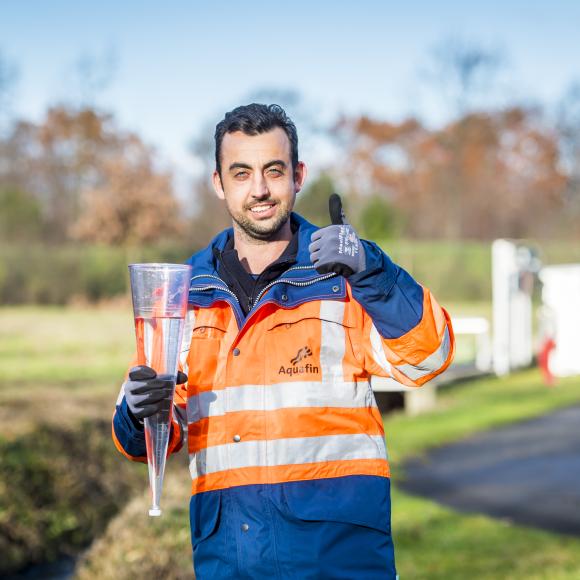Stable treatment results

Every day, Aquafin treats the domestic waste water of about 5 million Flemings. After a mechanical and biological treatment process, the waste water is clean enough to be discharged into a watercourse without disrupting its ecosystems. The water that ends up in a river or stream via our WWTPs has to comply with the standards set for 5 parameters: BOD (biochemical oxygen demand), COD (chemical oxygen demand), suspended solids, nitrogen and phosphorus. These standards specify both the upper limit for the concentration of the parameters in the treated waste water, and the percentage to be removed by the treatment process.
Thanks to good monitoring and efficient business operations, the success rate of our waste water treatment plants is always very high. That does not go without saying. Just one sample can mean that a plant may not fulfil a standard that year.
Diluted waste water
Weather conditions traditionally have an important influence on treatment results. For example, a cold winter is not good for biological treatment, while water samples taken on a rainy day yield results worse than those on a dry day. As the vast majority of sewers transport both rainwater and waste water, the latter is greatly diluted in rainy weather on arrival at the treatment plant. In some regions, even surface water ends up in the sewer system. Due to this dilution, concentrations of the waste materials to be removed in the incoming waste water are already so low that it can be difficult to achieve the required removal percentage.
Replacing technology
In most waste water treatment plants the technology fulfils the standards under normal circumstances. However, a small number of plants are still running with outdated technology, making it more difficult to fulfil them. Aquafin is replacing the technology step by step.
In addition to weather conditions and outdated technology, glitches in the treatment process itself can be a problem. There are many mechanical components and the biological processes used are quite vulnerable. In addition, Aquafin has no control at all over the composition of the incoming waste water: discharges into the sewer system, for example, can disrupt the treatment process.
Proper monitoring
Alertness and close monitoring of the treatment process are therefore crucial, even though we work a lot with automatic controls. Though proper maintenance is key to reducing technical problems, we cannot rule them out. And if something does go wrong, our on-call staff will receive an alarm, intervening quickly and efficiently.
